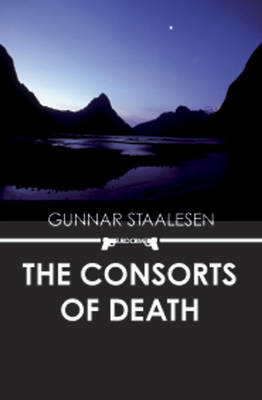
EURO CRIME
Reviews

Staalesen, Gunnar - 'The Consorts of Death' (translated by Don Bartlett)
Paperback: 272 pages (Sep. 2009) Publisher: Arcadia Books ISBN: 190641338X
Varg Veum is a private detective based in Bergen. Although he's featured in almost 20 novels, only two of them are readily available in English, both published by Arcadia: THE WRITING ON THE WALL (first published in 1995, 11th in the series) and THE CONSORTS OF DEATH (2006, 14th). I was lucky enough to obtain a second-hand copy of the second in the series, YOURS UNTO DEATH, first published in 1977, so I have some idea of the background of Varg Veum, who was ironically named "Varg", meaning "wolf", by his father - "Varg Veum" taken together meaning "outlaw", to his chagrin but to the mirth of many people he encounters.
Veum is a private eye of the classic mould, having been for many years a social worker specialising in child care. His experiences in this profession led him to become hopeless about the ability or even will of the state to help the many sad cases of abandoned and abused children he and his colleagues encounter. His constant brushes with authority led to a parting of the ways in the 1970s, and a new career as a private detective. The three books I have been able to read in this superb series all feature children and teenagers, and how Veum tries to protect them, often not very successfully - not so much for a lack of his own detective skills, which are pretty sharp, but because of the general hopelessness of their life-circumstances.
THE CONSORTS OF DEATH is a perfect introduction to Varg Veum because almost all of the book takes place in flashback, the first chunk of it back to the time before Veum became a detective and hence before the first book in the series. The reader learns Veum's back story as a social worker as well as being introduced to his newest "case", that of Johnny Boy, an ex-criminal newly released from prison, who has Veum on a "death list" of people he blames for his situation. When Veum learns this information, via an old colleague, he remembers the first time he met Johnny Boy, as a young baby. Later, the two meet again, again in awful circumstances when it appears as if the boy has killed his foster father. In the wake of that incident, Veum and two colleagues look after Johnny for six months before he is again taken into care.
Veum then leaves the social services department, sets up as a private detective and loses touch with the boy, until yet another crime takes place ten years later in a remote farmhouse. Again, Veum becomes involved, and not only becomes aware of a century-old crime in the same area that was never properly solved, but also uncovers many puzzling links and coincidences between all of these cases. The final part of the book returns to the present-day and the resolution of the story of Johnny and all the convoluted motives and relationships that are resolved in a cleverly constructed climax.
I enjoyed this book, and previous novels by this author, for many reasons. First, as Maxim Jakubowski writes on the cover, Varg Veum is a Philip Marlowe figure. The classic PI story is, for me as well as many others, a very large source of appeal of the crime-fiction genre. Gunnar Staalesen really is a worthy inheritor of the mantle of Chandler and Macdonald, both in his multi-level plotting and in his world-weary yet straight talking, semi-tough protagonist. Second, the writing is superb - it is always worth looking out for books translated by Don Bartlett, one of my favourite translators, and THE CONSORTS OF DEATH is no exception. Norwegian society and scenery are described with laconic beauty and meaning, an atmospheric background for the events of the story. Here is an example:
It was beginning to get dark as I drove into Osen where the Gaular waterway plunged like a faded bridal veil towards the fjord. High up above the mountains the moon had appeared, the earth's pale consort, distant and alone in its eternal orbit around the chaos and turmoil below. It struck me that the moon wasn't alone after all. There were many of us adrift and circling around the same chaos, the same turmoil, without being able to intervene or do anything about it. We were all consorts of death.
I can't recommend this book too highly. I thoroughly enjoyed every aspect of it, and am only a bit frustrated that because as most of the series is not (yet?) translated, there are gaps in the past 20 years of Veum's career which are hinted at but I can't fill in. In my opinion, this series stands alongside Connelly, Crais, Temple, Camilleri and others, who are among the very best modern exponents of the poetic yet tough detective story with strong, classic plots; a social conscience; and perfect pitch in terms of a sense of place.
Maxine Clarke, England
November 2009
Details of the author's other books with links to reviews can be found on the Books page.
More European crime fiction reviews can be found on the Reviews page.